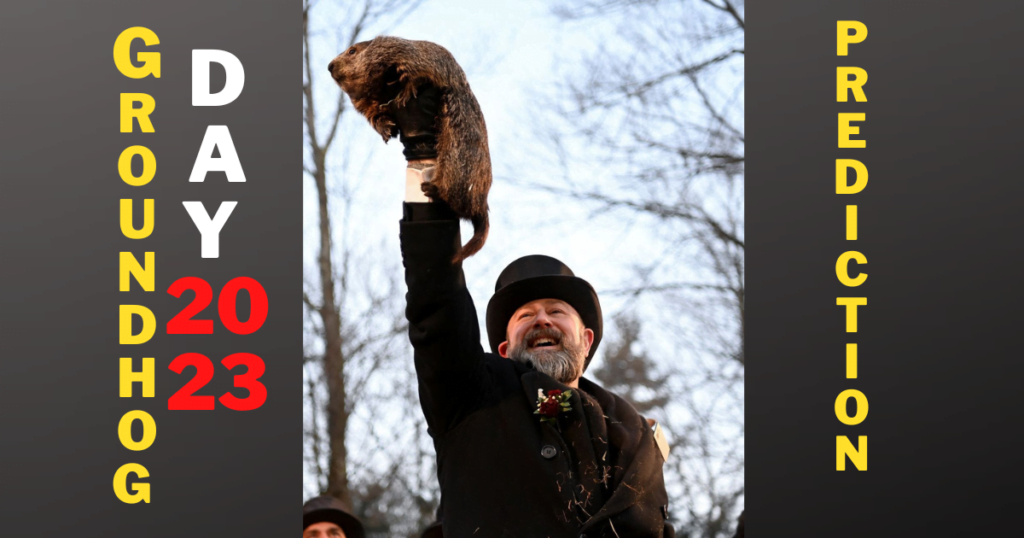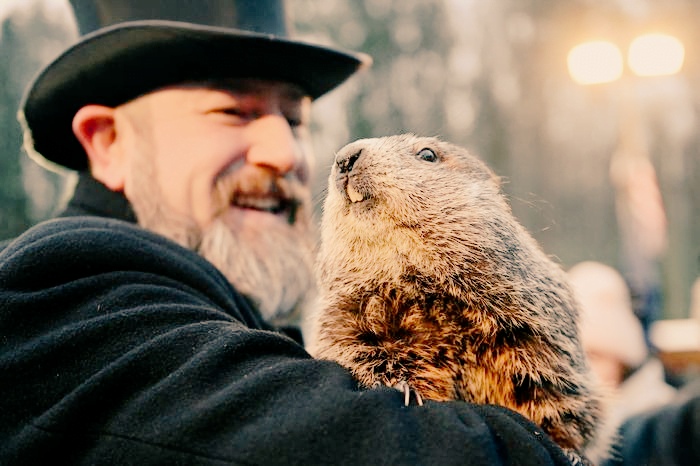
Groundhog Day History
Punxsutawney On Thursday, Phil, the most well-known groundhog in the United States, saw his shadow, indicating that the upcoming winter will be long and bitterly cold.
The custom originated in ancient Rome, when people utilized creatures that hibernated, such as hedgehogs, to anticipate when the weather would warm up.
By beginning its own yearly custom of utilizing groundhogs to make predictions, the Pennsylvanian town of Punxsutawney made history in 1887. Groundhog Punxsutawney Phil was given that moniker by the community.
Punxsutawney Phil Prediction 2023
On Thursday, Gobbler’s Knob saw a crowd of Punxsutawney residents. At dawn, Phil’s “inner circle” called him from his tree stump to ask if he had seen his shadow. According to them, he had. Folklore holds that if he sees his shadow, there will be another six weeks of winter. If not, spring arrives before schedule.
A group of local dignitaries known as the “inner circle” are in charge of organizing the activities as well as providing Phil with food and care.

Past Predictions
Records from 1887 show that Phil has correctly predicted winter more than 100 times. According to the organizers, ten years were lost since no records were kept.
The same as the previous year, the prognosis for 2022 predicted six additional weeks of winter.
Celebration’s for Groundhog Day
Groundhog Day is celebrated in various ways, depending on the location and the community. Some of the most common ways people celebrate include:
1- Groundhog Day Ceremonies: In Punxsutawney, Pennsylvania, the most famous Groundhog Day event takes place, where a groundhog named Punxsutawney Phil is pulled from his burrow to look for his shadow. This event attracts large crowds and is broadcast on TV.
2- Parades: Many communities organize parades to celebrate Groundhog Day, with participants dressed in costumes and marching to music.
3- Festivals and Parties: Groundhog Day is often celebrated with parties and festivals, including food, games, and entertainment.
4- Groundhog-themed Activities: Many schools, community centers, and parks offer Groundhog Day-themed activities, such as arts and crafts, games, and educational programs.
5- Outdoor Activities: Some people celebrate Groundhog Day by going for a hike, having a picnic, or engaging in other outdoor activities.

Overall, Groundhog Day is a fun, lighthearted way for people to come together and celebrate the end of winter and the arrival of spring, with a variety of festivities that reflect the interests and traditions of each community.
Groundhog Day has its roots in ancient midwinter celebrations, particularly in European tradition. The holiday has its origins in the early Christian celebration of Candlemas, which marked the midpoint between the winter solstice and the spring equinox. As part of this celebration, it was believed that clear weather on Candlemas foretold a prolonged winter, while cloudy weather indicated an early spring. Over time, this tradition evolved and was combined with similar beliefs from other cultures, such as the ancient Germanic festival of Imbolc, which was associated with the emergence of hibernating animals. This combination of beliefs eventually gave rise to the modern celebration of Groundhog Day, which continues to be observed on February 2nd as a lighthearted way to mark the transition from winter to spring.
I have a strong suspicion that visitors to Gobbler’s Knob are fully cognizant of the potential of science while also clinging to traditions and a more spiritual vibe “He claims. “Every human being possesses instincts, intuition, and imagination, which must coexist in harmony with logic and reason.
Massive socioeconomic and technological advancements sparked a yearning to revert back to what many thought were simpler times, which resulted in things like gothic revival architecture and literary romanticism.


